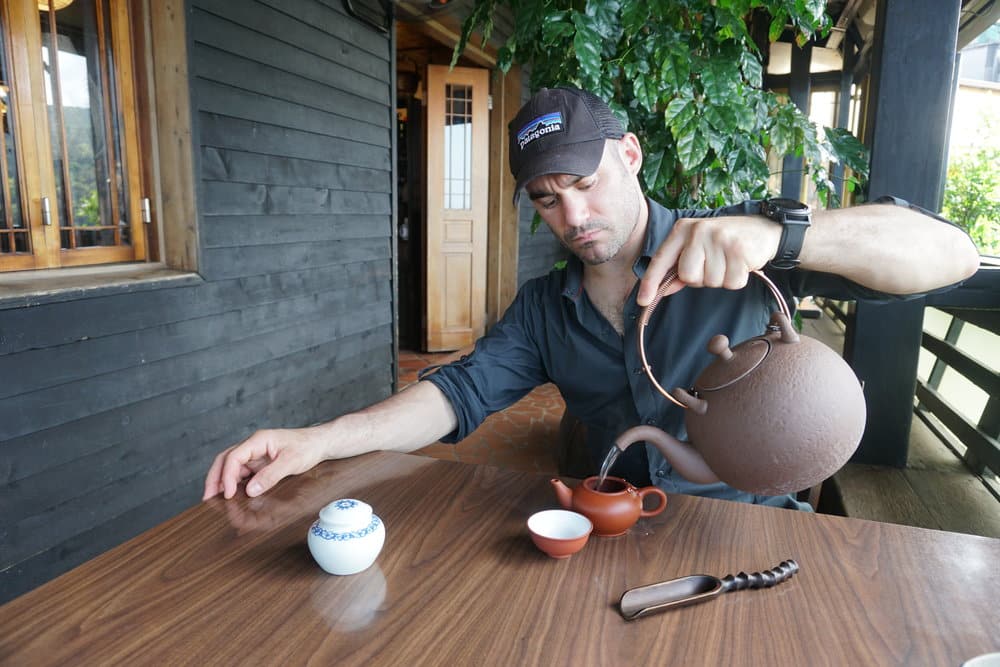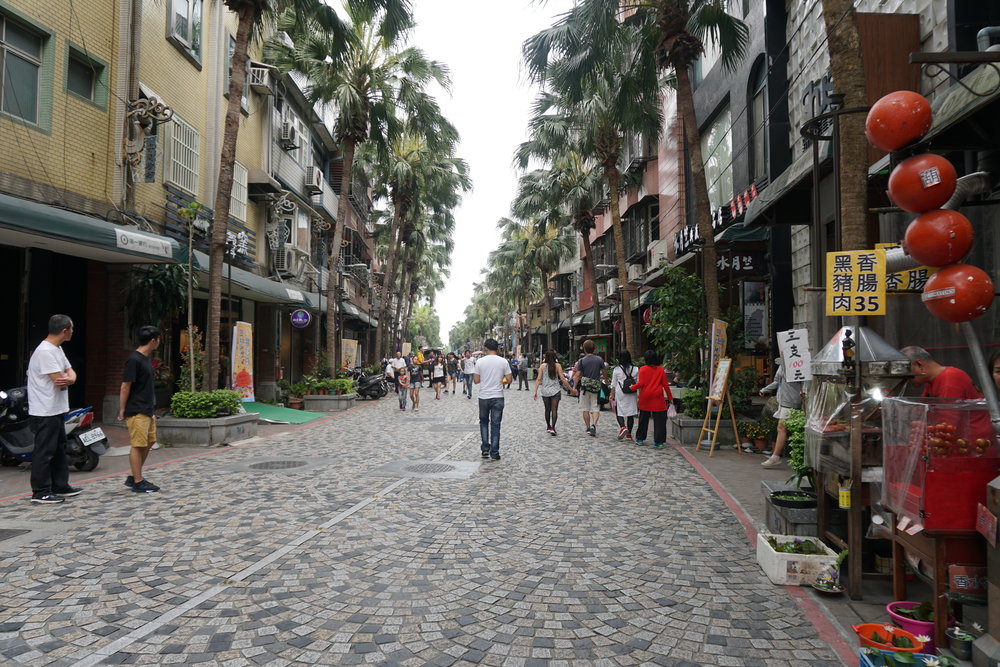When we decided to embark on this journey, we knew that we had to increase our knowledge of everything that surrounded tea. Instead of spending endless hours in front of a computer or reading endless numbers of books trying to find information, we thought it best to actually go to the source, and visit some tea producing countries to gain first-hand – and hands-on – knowledge.
Although the idea seemed a bit scary and full of unknowns at first, we knew that it was the right thing to do. This year we decided to explore Taiwan. This island, also known as Ilha Formosa, has a vibrant tea culture and the perfect place to discover the secrets behind one of our favorite type of tea – Oolong. Towards the end of March 2018, we packed our bags and flew to Taipei with no other intention than absorbing everything we would see, feel and taste. Having never been to Taiwan, we made an unofficial list of things we were interested in visiting. Here are some of the highlights of what we experienced during our stay:
Tea Ceremony – One of the first stop on our itinerary was Wistaria, a tea house located in Da’an, one of our favorite districts in Taipei. Its transformation into a tea house by Mr Chow Yu, in 1981, deeply influenced the renaissance of tea culture in Taiwan. This is where we experienced Gong Fu Cha for the first time. Also known as the Taiwanese/Chinese Tea Ceremony, Gong Fu Cha is essentially about controlling all the variables of tea-making using a high degree of precision and consistency in order to extract unique flavors consistently from the maximum number of brews a tea can make. We practiced our new skills on two other occasion in Juifen and at Yao Yue Teahouse in Maokong, where we had to get our own water from sources that were available all around the restaurant. During those time we had fun trying to describe the aromas and flavors that each brew offered us.

Gong Fu Cha in Juifen.
Tea Ceramics – Our new found enthusiasm for the Gong Fu Cha created the need to acquire the accessories necessary to enjoy Oolong in a traditional way. Throughout our first week in Taiwan we saw a couple of nice pieces, but our goal was to wait at the end of our trip to see what would be available in Yingge. Also known as the largest center for ceramic production in Taiwan, this town has an old pedestrian shopping street dedicated to pottery and ceramics shops where you can find all kinds of things from affordable factory made to expansive one of a kind piece of art. Yingges’ reputation for high quality ceramics began after potters and brick makers began to create tea sets that would match specially cultivated tea that was locally produced by Hakka Chinese immigrants. We finally ended up purchasing a couple of Yixing-style teapots along with some aroma cups, tea cups and a Gaiwan. Easily accessible by train, Yingge is also home of a popular ceramics museum and can be visited as a day trip from Taipei.

Shopping Street in Yingge.
Tea museums – Taiwan is home of many tea related exhibits. On our way the Yao Yue from the Maokong Gondola, we came across the Taipei tea promotion center for Tieguanyin and Baozhong tea. Inaugurated in 1985, this museum includes an exhibition area which explains the production process of Muzha Tieguanyin as well as Nanganng Paochung. We also stopped at the Chang Naimiao Memorial Tea Museum, which honours of one of Taiwan’s earliest tea master – Chang Naimiao. Mr Naimiao brought in Tieguanyin tea plants from Fujian province in 1895 and planted them in the Zanghu area of Muzha, the only place in Taiwan where tieguanyin is cultivated. Towards the end of our journey, we visited the Pinglin Tea Museum. This interactive museum is all about the history of Oolong and known to be the largest museum dedicated to tea. We were lucky enough to meet with an English-speaking volunteer who took the time to tour us around and explain in detail what the museum was all about. During our visit we also experienced a very informative exhibit on the evolution of tea packaging and finished our tour with a tasting session of different kinds of Oolong teas led by a local tea farmer. We finally, and unexpectedly, visited Sin Hong Choon, a small tea museum that used to be one of the largest tea workshop in the 1930’s. We were extremely grateful to see all these places and meet all the people who took the time to talk to us about all different aspects of tea which ended up improving greatly our knowledge.

Exhibit on Tea Packaging at the Pinglin Tea Museum.
Sarah + Chris
Have you visited a Tea Museum on your travels? Let us know in the comments below.
View our products in the Consumer and Licensee Shops!


